
For many, mythical creatures are often big and scary. The Loch Ness Monster, Kraken, and dragons are some popular mythical creatures that people love to talk about. However, few people know what mythical creatures are beyond the scary stories surrounding them.
What exactly are mythical creatures?
They are fantasy creatures and supernatural monsters from folklore, legends, and myths. Some of them inhabit forests, seas, and even the skies. Mythical creatures don’t have to be big and scary monsters.
In fact, most countries will have their own version of these legendary creatures. Some of them are small, and some are human-like. Some of them aren’t monsters at all. Instead, they’re magical animals that people worship and pray to.
Often, these folklore creatures say a lot about the culture of its origin. Thus, there is a lot that people can learn about just by studying them. If you’re interested in learning more about mythical creatures, their origins, and what they look like, then read on for a mythical creatures’ list!
Aqrabuamelu
Type of creature: Land
Place of origin: Mesopotamia
Other names: Scorpion Man, Scorpion Woman
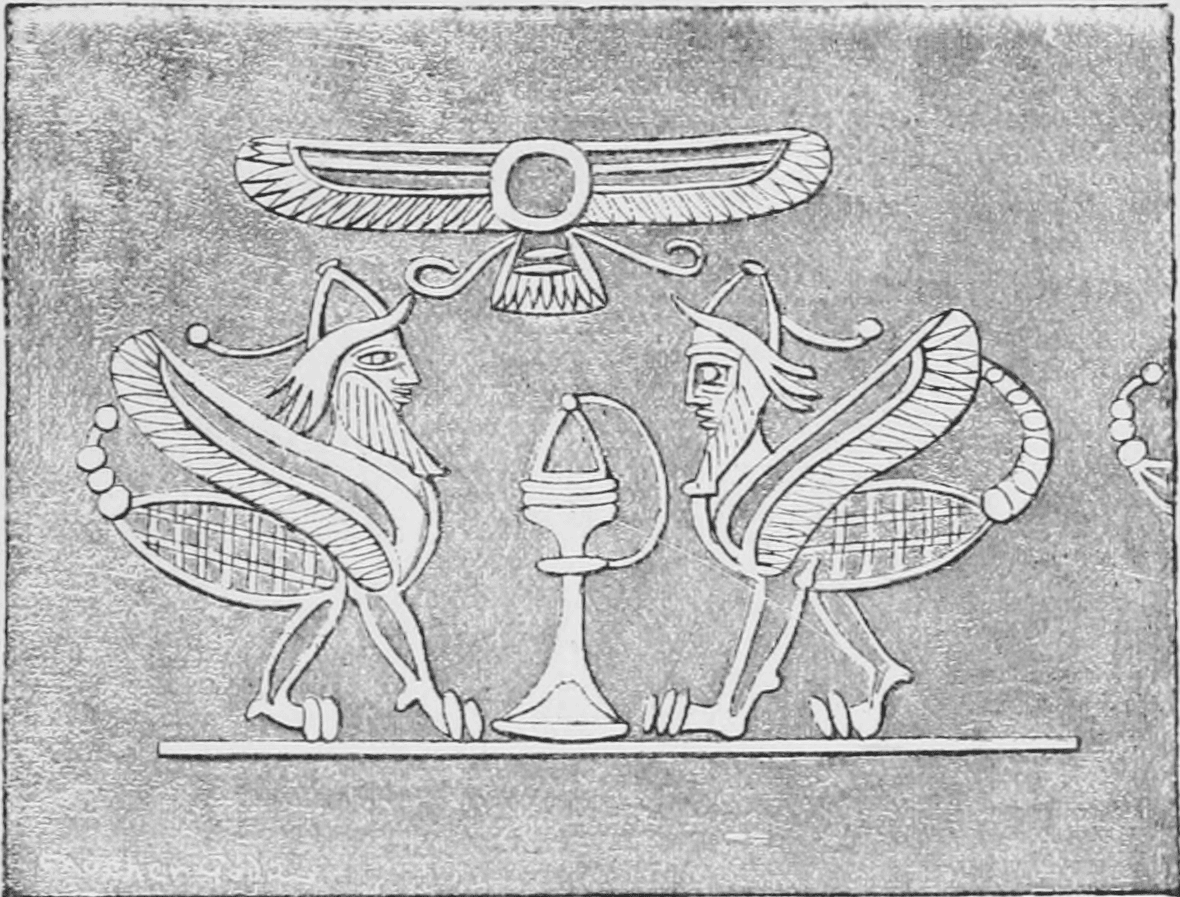
The Aqrabuamelu is one of the mythical creatures from Mesopotamia. In Mesopotamian mythology, the ocean goddess Tiamat created half-scorpion, half-human beings. From the waist up, Aqrabuamelu had a human body. Then, from the waist down, they had the body of a scorpion. In some versions of the myth, this creature would be a human with the skin, pincers, or tail of a scorpion.
The first that Tiamat created was big enough to reach the skies. They were strong, fast, and skilled in combat. These attributes helped them fulfill their purpose. Tiamat created them to help her win the war against other gods.
Banshee
Type of creature: Land
Place of origin: Ireland
Other names: Irish Bean Sidhe, Scots Gaelic Ban Sith, fairy woman
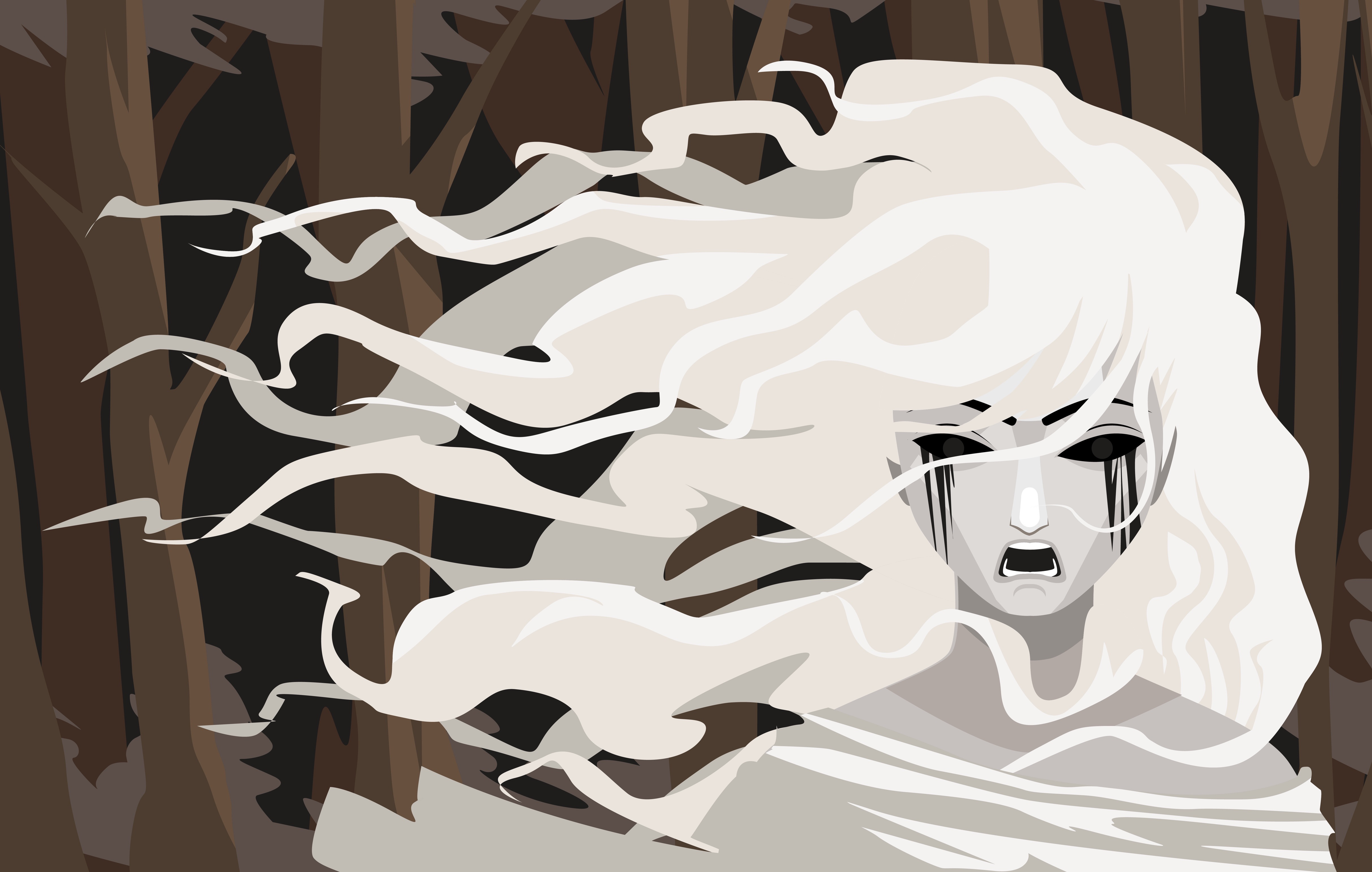
In most stories, banshees are beautiful mythical creatures. According to Irish mythology, a banshee is a beautiful woman in a white dress, with long white hair. In some versions, she has flowy red hair instead.
Her most distinct feature, however, is her shrieking voice. A banshee’s scream is called “caoine” or “keening.” The legend says that a banshee’s keening is a bad omen. If someone were to encounter a banshee’s screams, then it means a family member or loved one will soon pass away.
Not all banshees are ill-meaning, though. In some legends, banshees visit families to warn them of impending death in order to save the family member. They do so because they worry for their relatives.
Basilisk
Type of creature: Land and sea
Place of origin: Europe
Other names: King of Serpents, Ancient Serpent, Cockatrice

There are a lot of scary mythical creatures, but many believe the Basilisk is the scariest. As one of the dark creatures from European mythology, the basilisk is one of the most popular beasts ever. It also appeared in the fantasy series Harry Potter. This is likely why there are so many versions of the basilisk’s story today.
In some legends, the basilisk is only a small snake. However, it has deadly venom coating its scales. The smallest contact with its scales can poison a human. In other legends, the basilisk is an enormous serpent with eyes that can kill you. One glance from the basilisk will either paralyze or kill you.
The mythological basilisk is not to be confused with the common basilisk. The common basilisk is lizard species from Central and South America.

Behemoth
Type of creature: Land
Place of origin: Middle East
Other names: Great Beast, The Water-Ox
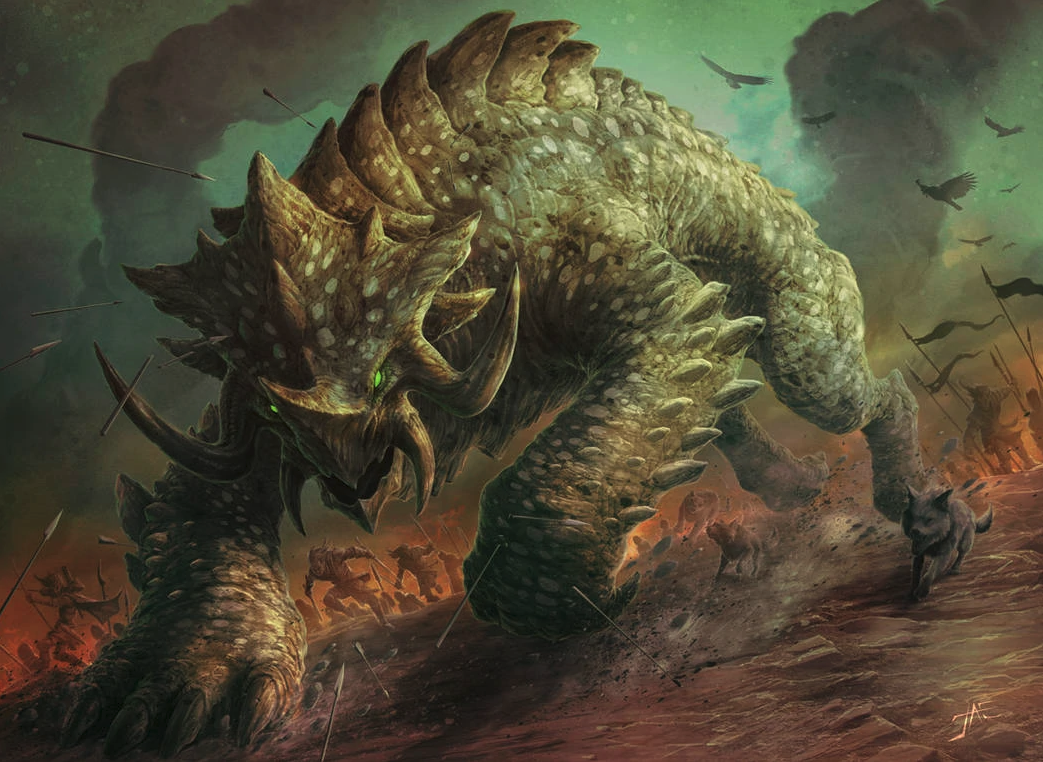
Next on this list of mythical creatures is the Behemoth. The Behemoth is one of the many types of monsters from the bible, which appears in the Book of Jobs. In the passage, Behemoth partners with Leviathan. Together, they are chaos monsters that people should be wary of. Behemoth is an elephant-like monster that eats grass and is incredibly strong and big. It is also not afraid of water.
The word “behemoth” can also refer to anything big, in appearance or power. This adjective comes from the imagery that the bible paints of the monster Behemoth.
Bigfoot
Type of creature: Land
Place of origin: Canada and North America
Other names: Sasquatch

When you ask people about mythical creatures, Bigfoot is often the common answer. This is because Bigfoot is popular in many stories. Aside from Canadian and American folklore, Bigfoot is also a recurring figure in pop culture. This mythical creature has appeared in many cartoons, TV shows, and films.
Bigfoot is around 6 to 15 feet tall, and he stands on two feet. His footprints are around 24 inches long and 8 inches wide. As it is a large and hairy creature, it resembles an ape with enormous feet. A lot of people claim that they’ve seen the Bigfoot. However, they often cannot back up these claims with solid proof. Still, researchers are gathering data based on these sightings.
Bogeyman
Type of creature: Land
Place of origin: England
Other names: Boogeyman, Boogie Man, Boogie Monster, Boogie Woogie

Growing up, most children hear stories about the Bogeyman. In Western cultures, parents often tell their kids scary stories about the Bogeyman. They do this to scare children, hoping their kids will not misbehave.
According to some stories, the Bogeyman would steal naughty children at night. While in some extreme legends, the Bogeyman would also eat the children. The Bogeyman’s appearance differs from story to story. Usually, the Bogeyman is a large male figure in a hooded cloak. Some depictions show the Bogeyman having claws and sharp fangs. A few depict the Bogeyman as a demon or witch.
Centaur
Type of creature: Land
Place of origin: Ancient Greece
Other names: Centaurus, Kentaur, Kentauros, Sagittary

Out of all the Greek mythical creatures, the Centaur is one of the most popular. The Centaur appears in many books and films, including the Harry Potter and Percy Jackson series.
Centaurs are hybrids. They have a human upper body and the lower body of a horse. According to Greek mythology, centaurs were wild beasts inhabiting the mountains of Ancient Greece. They were also powerful runners and skilled warriors. In some depictions, they are great archers.
There are many notable centaurs in Greek legends. However, the most well-known is Chiron. Chiron is the “wisest and justest of all the centaurs.” He was adept in different types of combat and various sciences. This makes him a suitable teacher of Greek’s greatest heroes. Some of his students were Achilles and Heracles.
Chupacabra
Type of creature: Land
Place of origin: Puerto Rico, Mexico, United States
Other names: El Chupacabra, Chupacabras

As far as mythical creatures go, the Chupacabra is one of the scariest. Chupacabras are mythical beasts that come from Puerto Rico. The name, “Chupacabras,” comes from the Spanish words, “chupar,” which means “to suck,” and “cabras,” which means “goats.” Thus, “Chupacabras” literally translates to “goat-sucker.”
This is a fitting name as the legend says that chupacabras are vampires. However, instead of humans, they drink the blood of goats, cows, and other livestock. Different versions of the myth describe the creature’s appearance differently. In some stories, it looks like a wild dog. In some versions, the chupacabra looks like an alien lizard.
Cyclops
Type of creature: Land
Place of origin: Greece
Other names: Cyclopes (plural form)

The Cyclops is another one of Ancient Greece’s mythical creatures. The term, “cyclops,” comes from the Greek word for “Round Eye.” As their name suggests, cyclopes are giant creatures with only one eye. This giant eye rests on the cyclops’ forehead.
Cyclopes play a big role in Greek mythology. In one of the epic poems, the Cyclopes brothers made Zeus’ thunderbolt weapon. In Homer’s Odyssey, Cyclopes were shepherds that Odysseus encountered.
Dragon
Type of creature: Land
Place of origin: China
Other names: Chinese dragon, loong, long, lung

Among Chinese mythical creatures, dragons are the most popular. During Imperial China, the emperor favored the Chinese dragon. He would use it as his official symbol as the emperor. This is because, in Chinese culture, the dragon represented auspicious power, strength, and good fortune. In Yin and Yang, dragons were the yang or masculine energy.
Unlike Western depictions, Chinese dragons do not have wings. They are large reptiles that have a snake body, sometimes with four legs. Artists usually depict these magical creatures in vibrant colors, such as red and blue.
Dybbuk
Type of creature: Land
Place of origin: Eastern Europe
Other names: Dibbuk, dybbukim (plural)

Most mythical creatures are scary because they are big and have animalistic features. Meanwhile, dybbukim are scary for different reasons. In Jewish mythology, dybbukim are cursed spirits. They wander the earth aimlessly and can only pass on after possessing a human body that will help them achieve their last goals.
If possessed, the host must undergo an exorcism. Otherwise, the dybbuk will not leave the host until after they settle their unfinished business. Demonic possession is common in other cultures as well. Each culture has its own rite of exorcism.
Fairies
Type of creature: Land and air
Place of origin: European countries
Other names: Faeries, Fae, Fay, Fair Folk
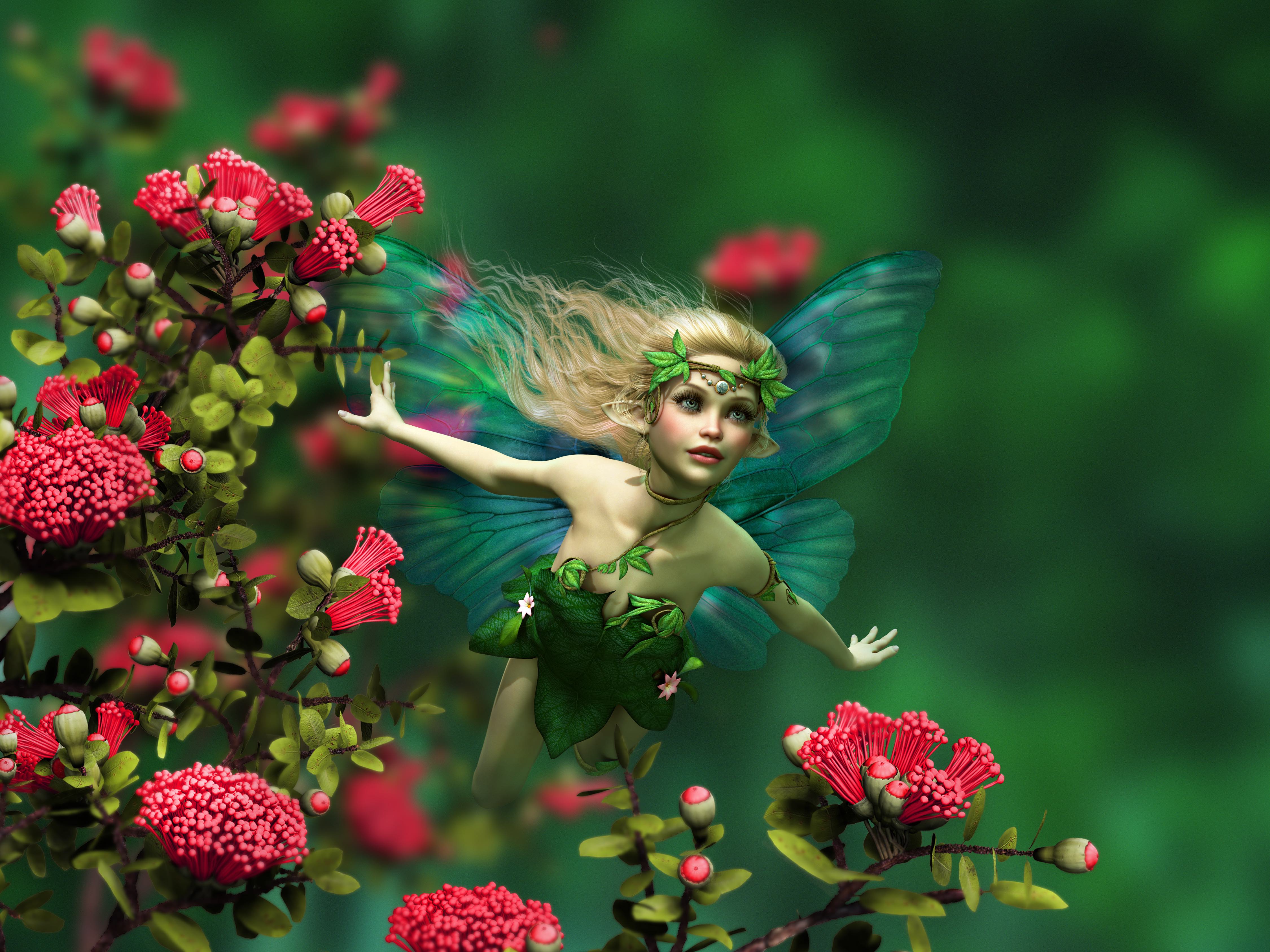
When it comes to fantasy mythical creatures, fairies are usually at the top of the list. Fairies are fantasy creatures that exist in different cultures. French, German, and English folklore all have myths about fairies.
Most stories depict fairies as small winged creatures that can fly. They are like pixies or spirits that enjoy nature. Thus, people believe they have green clothes and hair. Often, fairies are mischievous creatures who look like humans. However, they have magical powers that they often used to cause trouble.
One famous example of this in literature is Puck. Puck is a conniving fairy from Shakespeare’s A Midsummer Night’s Dream. Another example is Tinkerbell from Disney’s Peter Pan.
Fauns
Type of creature: Land
Place of origin: Ancient Rome
Other names: N/A
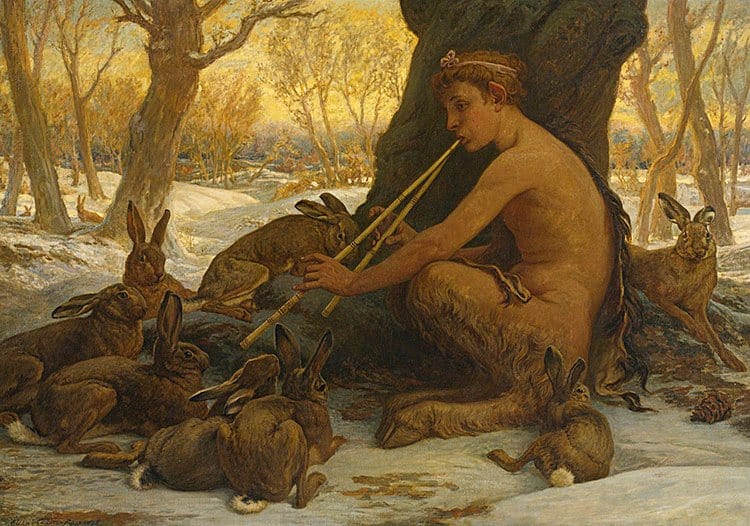
Fauns are mythical creatures from Roman mythology. They are half-human and half-goat hybrids. Their upper bodies are human while they have the legs and tail of a goat. They dwell in forests as nature spirits.
The term, “fauns,” comes from the name “Faunus.” Faunus is the Ancient Roman god of the forest. He had horns, and he ruled over the fields of Ancient Rome. An example of a faun from pop culture is Mr. Tumnus from The Chronicles of Narnia. Another example is Elora from Spyro video games.
In Greek mythology, a faun’s counterpart is the satyr. The satyr is also a half-human and half-goat creature.
Ghoul
Type of creature: Land
Place of origin: Pre-Islamic Arabia
Other names: N/A

Another one of the most popular mythical creatures is the ghoul. A ghoul is a demon who dwells in graveyards. According to Arabic mythology, ghouls ate human flesh. They do not have a permanent human form though. Sometimes, they disguised themselves as a beautiful woman in order to attract innocent travelers.
Some legends say ghouls can only be killed with one strike. Striking it twice would only bring this demonic creature back from the dead.
In pop culture, the ghoul features in many films and literature. One example is in the popular anime series Tokyo Ghoul.
Gnomes
Type of creature: Land
Place of origin: European countries
Other names: Garden gnome, Dwarf

For many, gnomes are just decorative figures in one’s garden. However, gnomes are actually mythical creatures from European folklore. They are dwarfish creatures with hunched backs. Gnomes are earth spirits and they guard mines and other places with treasures.
Modern interpretations of the gnomes are like the dwarves from Disney’s Snow White. Thus, people often draw them in colorful clothes.
Goblins
Type of creature: Land
Place of origin: European countries
Other names: Gobblin, Gobeline, Goblyn, Dokkaebi

There are plenty of mythological creatures in European folklore. Another example is the goblin. A goblin is a small malicious creature. They are similar to fairies, but they are often greedy and mean. They like gold and jewelry. Thus, stories often warn of goblins who will steal from you.
In Korean culture, these mythical creatures are called “Dokkaebi.” This name translates to “Korean goblins.” Dokkaebi have different physical forms. However, they often wear hanboks, or traditional Korean clothes.
Goblins are common in modern literature. For instance, Marvel Comics references goblins with the villain, “Green Goblin.”
Golem
Type of creature: Land
Place of origin: Prague
Other names: N/A

The golem is another mythical creature from Jewish folklore. Golems are amorphous creatures. They begin as inanimate objects or beings, such as clay statues. It is only after a person performs a charm or rite can the golem come to life. In some stories, the golem is the “perfect servant.” His sole purpose is to serve his creator.
The most popular story of the golem is from Prague. During the 16th century, a rabbi from Prague created a golem out of a riverbank’s clay. The rabbi ordered the golem to protect Jews from hate crimes. In some versions of this tale, the golem could turn invisible and summon evil spirits within.
Gorgon
Type of creature: Land
Place of origin: Ancient Greece
Other names: N/A

Gorgons are mythical creatures that appear in the earliest stories of Ancient Greece. Gorgons are immortal creatures with snakes for their hair. The gorgon’s stare is deadly. Making eye contact with the gorgon or any of the snakes in her hair will immediately turn you into stone.
In Greek mythology, there are three well-known gorgons: Stheno, Euryale, and Medusa. While the first two sisters were immortal, Medusa was not. Thus, the demigod Perseus was able to kill Medusa by beheading her. Even though she was already dead, the severed head could still turn people into stone.
Griffin
Type of creature: Land and air
Place of origin: Egypt, Persia
Other names: Griffon, Gryphon, Hippogriff

One of the most majestic mythical creatures ever is the griffin. A griffin is a hybrid with the body, hind legs, and tail of a lion. Meanwhile, the other half of its body is of an eagle. It has an eagle’s head, talons, and wings.
In legends, the lion is the king of the animal kingdom. An eagle is also considered the king of the birds. Thus, a griffin was an especially majestic beast. The griffin is a popular figure in Asian and Greek culture, as well as Persian mythology. In their versions of the story, griffins laid golden eggs.
Kraken
Type of creature: Sea
Place of origin: Norway, Denmark, Greenland, and Sweden
Other names: N/A

When it comes to mythical sea creatures, sailors likely fear the Kraken the most. The Kraken is a gigantic sea monster that looks like an octopus. According to myths, the Kraken haunts Norway and Greenland waters. The Kraken has large and strong tentacles that can pull entire ships under the water. In some depictions, the Kraken can also split these ships in half.
For some, they do not believe in the Kraken. They believe that sightings of this beast are actually only giant squids or octopuses. However, plenty of fiction takes inspiration from this mythical creature. For example, the Kraken appears in Disney’s Pirates of the Caribbean movies.
Leprechauns
Type of creature: Land
Place of origin: Ireland
Other names: N/A

Leprechauns are mythical creatures from Irish folklore. They are dwarfish bearded men. Most depictions show them wearing a green suit and hat. They are often mischievous creatures who favor gold and other jewelry. In modern stories, people associated leprechauns with rainbows. According to the stories, leprechauns hide their pots of gold at the end of a rainbow.
These creatures prefer to be alone. However, in some stories, leprechauns kidnap humans. In the story of the King of Ulster, three leprechauns drag the king while he is asleep. They almost drown him. However, the king wakes up and wins the upper hand. Captured, the leprechauns grant him three wishes in exchange for their freedom.
Leviathan
Type of creature: Sea
Place of origin: Mesopotamia
Other names: Livyatan (Hebrew name)

Another example of mythical creatures from the Bible is the Leviathan. Leviathan is a monster that lives in the seas. The Books of Job, Isaiah, Amos, and Enoch all mention the Leviathan. Psalms also contain a passage about the Leviathan.
Each of these passages describes the Leviathan differently. For example, Psalms describes the Leviathan as a serpent with many heads. Other passages simply describe the Leviathan as a great big sea monster. In modern depictions, Leviathan is often a dragon-like monster. It is a creature that God created to showcase his power. In the end, God also killed this creature as food for the Hebrews.
Loch Ness Monster
Type of creature: Sea
Place of origin: Scotland
Other names: Nessie, Niseag

The Loch Ness Monster is a sea monster that lives in Loch Ness in the Scottish Highlands. Drawings of mythical creatures often differ because of an artist’s interpretation. However, most people agree that the Loch Ness Monster has a long neck with one or more humps on its back.
A lot of people claim to have seen the Loch Ness Monster. However, there have been plenty of hoaxes too. Up to now, no proven sightings have occurred. Still, tourists often visit Loch Ness hoping to see this beast.
The Loch Ness Monster is also a popular figure in film and literature. One notable example is the reference to this sea creature in the Twilight franchise.
Mermaid
Type of creature: Sea
Place of origin: Europe, Asia, and Africa
Other names: Merman, Merfolk, Merpeople

One of the most popular mythical creatures is the mermaid. Mermaids are humans with a fish’s tail. Stories usually depict mermaids as women. However, some modern stories also feature mermen.
Depending on the culture, mermaids can be good or evil creatures. Greek Mythology, for instance, links mermaids to sirens. Sirens are sea creatures who lure and trick sailors with their captivating voices. In other cultures, mermaids are sea creatures that can bless human beings. They are like water nymphs who can even fall in love with humans.
The most popular story of mermaids is The Little Mermaid. This is a fairy tale by Christian Andersen, and many films and TVs have adapted this story.
Minotaur
Type of creature: Land
Place of origin: Ancient Greece
Other names: Minotaurus
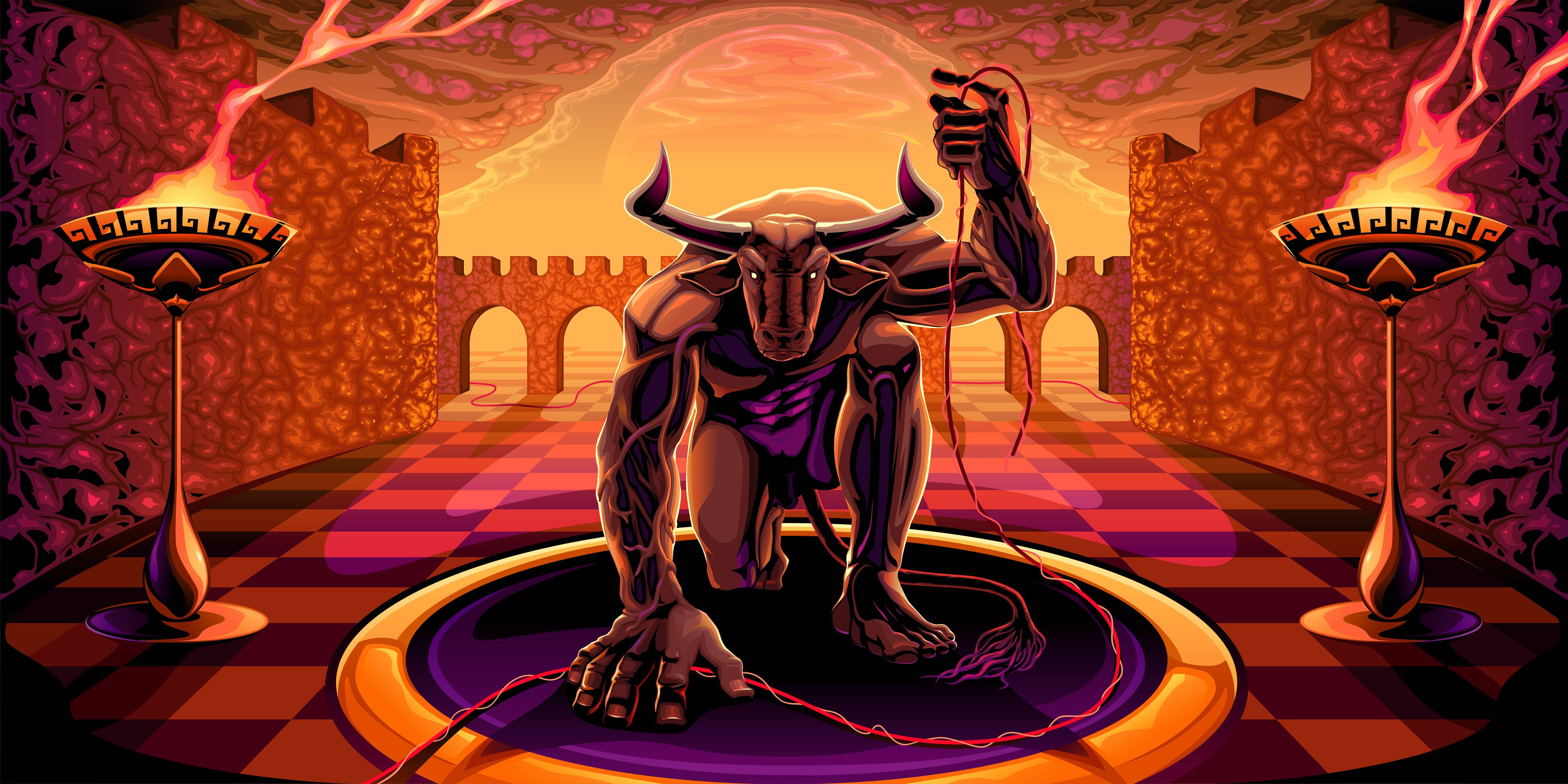
There are many mythical creatures that are human hybrids. Another example is the Minotaur. In Greek mythology, the Minotaur is a beast with the head of a bull and the body of a man.
According to the legend, Minotaur is the son of Pasiphae and a bull. The god Poseidon gave Minos a bull to sacrifice. However, Minos did not sacrifice the bull. In anger, Poseidon cursed Pasiphae to fall in love with the bull. Thus, she gave birth to the Minotaur.
The Minotaur lived in the center of Minos’ Labyrinth. Eventually, the hero Theseus found his way through the maze and killed the Minotaur.
Oni
Type of creature: Land
Place of origin: Japan
Other names: Yokai, Japanese Ogre

Japanese mythical creatures are often popular characters in anime, film, and theater. An example is the Oni. The oni is an orc or ogre, a hairy humanoid creature, with horns on its head. Onis are a type of yokai. In Japanese folklore, yokai refers to spirits that can either be good or evil.
Usually, onis wear brightly colored clothes and carry a kanabo club. A kanabo club is a Japanese weapon. It is a two-handed war club with spikes or studs along the body. Samurais used this during feudal Japan.
In some depictions, onis have bright red or blue skin. They will have multiple eyes, sharp teeth, and horns. Their appearance is scary, and thus people often perform rituals to chase them and other spirits away.
Ogre
Type of creature: Land
Place of origin: Britain, Italy, and other countries
Other names: Ogress

Ogres are mythical creatures that often appear in video games. In these depictions, ogres are usually ugly with green skin. They are barbaric, monstrous creatures that eat humans. These depictions are like how most myths describe ogres.
In most legends, ogres are usually tall, with incredibly large heads. They are much like giants. However, they are characteristically ugly. The famous Shrek films feature a green ogre as the protagonist. In this film, Shrek is not the villain. Even if he is grumpy and sometimes gross, he is the good guy in the film.
Phoenix
Type of creature: Land and air
Place of origin: Ancient Egypt and Ancient Greece
Other names: Garuda, Feng-huang, Milcham

When talking about cool mythical creatures, the phoenix is a common answer. This holds true even if the phoenix is literally a firebird. In Egyptian folklore, the phoenix is a large bird with red and gold feathers. The phoenix is immortal. According to some legends, the phoenix will die after bursting into flames. After, it will simply rise from its own ashes again.
A phoenix can live up to 500 years. However, only one of them can exist at any time. Thus, the phoenix was an important symbol of life and death. To many, the phoenix represents hope and life after death.
Pontianak
Type of creature: Land
Place of origin: Indonesia and Malaysia
Other names: Kuntilanak (Indonesian name)

The Pontianak is one of the mythical creatures from Asia. According to the legends, the Pontianak is the female spirit of a woman who died during childbirth. In some versions, they are pregnant women who died before they could give birth. Thus, Pontianaks are described as angry female spirits.
Depictions of the Pontianak is usually a pale, long-haired woman dressed in white. She is also a vampire who feeds on humans. In Malaysian folklore, the Pontianak have long claws that they use to rip open the internal organs of men.
Another Malaysian belief is that the Pontianak finds their prey by sniffing their clothes. This is why some refuse to leave their clothes hanging outside at night.
Tengu
Type of creature: Land
Place of origin: Japan
Other names: N/A

The Tengu is another one of Japan’s mythical creatures. In Japanese, tengu means “Heavenly Dog” or “Heavenly Sentinel.” Depictions of the Tengu differ. Some depict the Tengu as yokai while others depict them as Shinto kami or gods.
According to Japanese folklore, the Tengu is a human with avian and/or monkey features. Tengus can have the wings of eagles or hawks. They have long noses and live on trees. In Buddhism, Tengus were demons. They brought about war and destruction.
In pop culture, the image of Tengus has softened. For instance, the Pokemon Shiftry takes inspiration from the tengu.
Unicorn
Type of creature: Land
Place of origin: Mesopotamia, India, China, Ancient Greece, and other European countries
Other names: Monocerus

If you’re looking for cute mythical creatures, the unicorn might be the answer. Unicorns are majestic yet gentle horses with a single horn on their forehead. Often, the horn is long and spiraling. While depictions vary, unicorns are usually white or light-colored.
In some legends, people who drink from the horn of a unicorn will be immune to many diseases. There is also the belief that drinking the blood of a unicorn will grant you eternal life.
Vampire
Type of creature: Land
Place of origin: Western and Eastern Europe
Other names: Vampyre, Dracula, Shtriga (Albanian name), Strigoi (Romanian name)

If you read a lot of fantasy books, you’ll have likely encountered these mythical characters. Vampires are undead monsters who feed on human blood. Many legends describe them as charismatic and attractive. These features help them lure and drink from unsuspecting victims.
A lot of legends surround the vampire. For instance, legend says that vampires are afraid of garlic. Another myth says that vampires cannot enter your house unless you invite them in.
Today, vampires feature in a lot of romance novels and movies. While they are scary, these stories portray them as people you can fall in love with. Some examples include the Twilight series and Vampire Diaries.
Wendigo
Type of creature: Land
Place of origin: Canada and United States
Other names: Windigo
Canadian folklore warns of the Wendigo. Wendigos are evil mythical creatures that can possess humans. They look like humans. Thus, they can easily lure victims and trick them. When possessed by the Wendigo, a human will suddenly desire human flesh. They will turn into cannibals. Wendigos cannot control their urges to kill and they eat even their loved ones.
Psychiatrists dubbed the name, “Wendigo psychosis,” for a similar disease. When a patient suddenly craves human flesh, they are experiencing Wendigo psychosis. Patients under this diagnosis also fear turning into cannibals.
Werewolf
Type of creature: Land
Place of origin: European countries
Other names: Lycanthrope

The werewolf is another popular character in film and literature. Werewolves are humans that can shape-shift into a wolf. In some depictions, they can only take on a half-human, half-wolf form instead. This shift can either be on purpose or forced by the powers of a full moon.
According to European folklore, you can only turn into a werewolf after being cursed or bitten. In other versions, being a werewolf is hereditary. During the time of witch hunts, many believed that witches were also werewolves. Some also believed that witches could control these mythical creatures.
Zombie
Type of creature: Land
Place of origin: Haiti and Africa
Other names: The Undead

When people talk about the Undead, they are often referring to zombies. Zombies are popular motifs in horror, science fiction, and fantasy literature. Not many people, however, know where these creatures come from.
In Haitian folklore, a zombie is an undead creature that was brought back to life through voodoo. Thus, zombies are a product of necromancy. Zombies are mindless, and they have no free will. They are simply slaves of the witch.
In modern literature, zombies result from scientific accidents instead of magic. Radiation, diseases, and lab mishaps often lead to the zombie apocalypse. An example of this is the Korean film #Alive on Netflix.
While many do not believe in zombies, some believe that it is still better to be prepared. In fact, the Centers for Disease Control and Prevention have a page for zombie preparedness on their website!
Was this page helpful?
Our commitment to delivering trustworthy and engaging content is at the heart of what we do. Each fact on our site is contributed by real users like you, bringing a wealth of diverse insights and information. To ensure the highest standards of accuracy and reliability, our dedicated editors meticulously review each submission. This process guarantees that the facts we share are not only fascinating but also credible. Trust in our commitment to quality and authenticity as you explore and learn with us.
